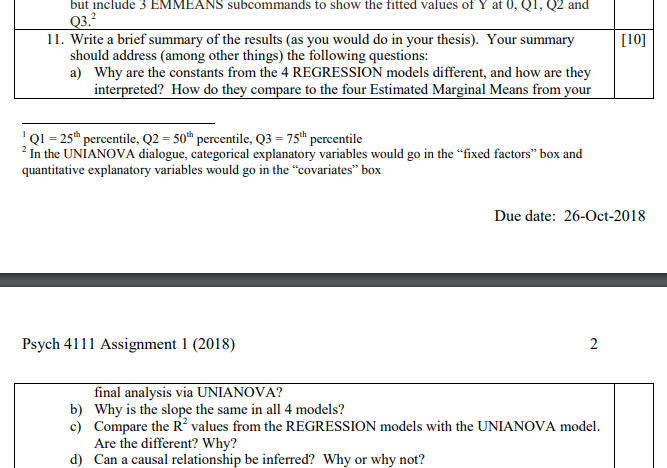
Estimated Marginal Means The following table shows the adjusted group means These means are adjusted for the covariate. Sometimes the standard errors and CIs in the Marginal Means are larger than expected based on the standard deviations of the cells, and sometimes they are smaller. because of the way SPSS calculates the ANCOVA (Leech, Barrett, & Morgan, 2005).

The estimated means will be adjusted (or will take into account) for variations of these other components. Remember this tests the differences in variances across the three different groups. For instance, we could fit a model that takes into account the interaction with the other variable, Petal.Width. The estimated marginal means box provides you with the mean, SE (remember the difference) and the 95CI (which you will need) This is your Homogeneity of Variances test. I cannot figure out how these were computed, because they do not match the standard deviations for these 4 cells that are reported in the descriptive statistics. The power of marginal means resides in the fact that they can be estimated from much more complex models. However, in the Estimated Marginal Means I also get standard errors of the means and 95% confidence intervals for the four means. These means are the same as those I get in the descriptive statistics, which is what I expected. In the ouput, when I look at the Estimated Marginal Means for the interaction of group and time, I get four means, one for each cell of these two crossed factors. For a covariate, the estimated marginal mean is the mean of Y for each group of the IV at one specific value of the covariate.

It works a little bit differently than it does with a factor. Again, they’ll differ from observed means. I asked SPSS to also give me the Estimated Marginal Means and descriptive statistics. When you have a covariate in the model the estimated marginal means will be adjusted for the covariate. I asked SPSS to also give me the Estimated Marginal Means and descriptive statistics. then you would report the 'estimated marginal means' rather than the means from the Descriptives table. Let's say the between-subject factor is treatment group with levels treatment and control, and the within-subject factor is time, with levels pre-treatment and post-treatment. Reading: SPSS Base 9.0 Users Guide: Chapter 20, GLM Univariate Analysis SPSS Advanced Models 9.0. I used SPSS to do a repeated measures ANOVA including one within- and one between subject factor.


 0 kommentar(er)
0 kommentar(er)
